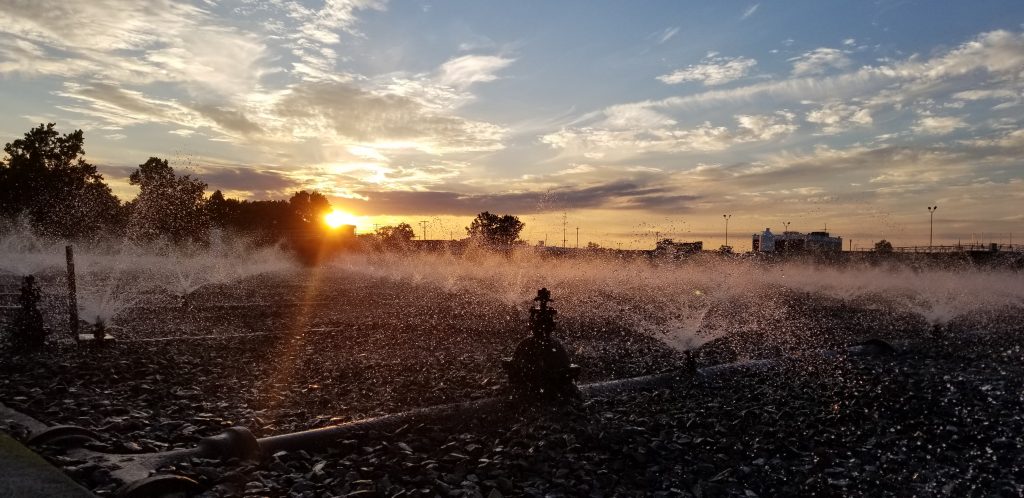The beauty of … bacteria?
August 13, 2018
This is a beautiful photo — but what’s even more beautiful is what you can’t see: The water purification process taking place.
The water that’s being sprayed into the air is wastewater, and it’s landing on rocks that are coated with a film of specialized, microscopic organisms. As the wastewater trickles down through the rocks, those microscopic organisms are hard at work cleaning it up. They’re consuming organic pollutants — in this picture, it’s ammonia — and the water will then flow down through the rocks to be collected in final clarifiers, where it will be treated and cleaned even further.
The organisms doing the work include bacteria, algae, protozoa, fungi, and other multicellular organisms. The spraying serves two functions: It controls the dosing of wastewater to the filter media and it also promotes higher dissolved oxygen, which is required to perform the biology needed to break down organic material.
You’re probably thinking, “Oh, I bet that smells!” But the truth is, odors at this stage are minimal. The wastewater in the trickling filter process remains in an aerobic state, meaning the bacteria are using oxygen that limits the production of hydrogen sulfide. Hydrogen sulfide is responsible for a “rotten egg smell” — which is the most common odor-causing gas in wastewater.
Other areas of LCA’s treatment process that are more … smelly … are enclosed and the odorous air is removed and scrubbed before being discharged to the atmosphere.
You might also be thinking, “Wow — this is cutting-edge technology.” Maybe so, but Allentown’s Kline’s Island Wastewater Treatment Plant rock media trickling filters were installed in 1931 and the tried-and-true technology at work here is more than 100 years old!